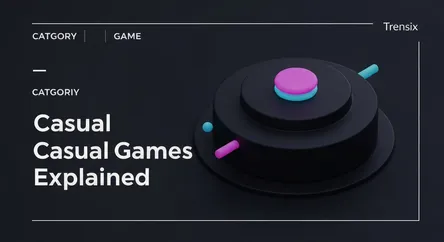Game
Casual Games Explained

Discover casual games: easy-to-learn titles designed for short play sessions on any device. Learn why they dominate the mobile gaming market.
What is it?
A casual game is a video game designed with simple rules and a low barrier to entry, intended for a broad, mass-market audience. Unlike hardcore games that require significant time investment and skill, casual games can be played in short bursts, often on mobile devices. They feature straightforward gameplay mechanics, intuitive controls, and a forgiving difficulty curve. Popular genres include puzzles, match-three, and endless runners. Iconic examples like Candy Crush Saga, Wordle, and Angry Birds perfectly capture the essence of this category, offering quick, satisfying entertainment without a steep learning curve.
Why is it trending?
The casual game market is booming due to the ubiquity of smartphones, which have made gaming accessible to nearly everyone. Their free-to-play business model, typically supported by in-game advertising or microtransactions, removes the initial cost barrier, encouraging widespread adoption. The design philosophy focuses on short, engaging play sessions that fit perfectly into modern life—whether on a daily commute or during a lunch break. This accessibility has vastly expanded the gaming demographic beyond traditional audiences to include all ages and genders.
How does it affect people?
Casual games provide a convenient source of entertainment and mental stimulation, offering a quick way to relax and de-stress. They can foster social connections by allowing friends to compete or collaborate. However, there are potential downsides. The design of many casual games incorporates psychological hooks to maximize engagement and encourage in-app purchases, which can lead to addictive behavior and unintentional spending. Concerns also arise regarding data privacy and the effects of increased screen time, highlighting the need for mindful play habits.